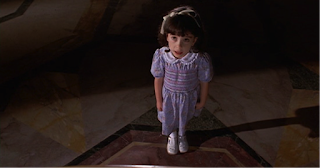Conventional Sounds and Music in Thriller Films
Sounds in thriller films are used to create understanding and meaning for the audience. This will then enable the audience to create a response to the film. Thriller films include sounds and sountracks into their films in order to build the audiences understanding of what is happening in the film. The sounds are used to evoke the characters feelings and emotions in order to get a responce from the audience. It is also often used to symbolise both the protagonists and antagonists movements in the scene. By carefully using the sounds employed in the scene it creates the right mood and atmosphere and in the context of the thriller genre, helps to build suspence and tension. There are many different sound techniques that directors use within a scene, examples of these are: diagetic, non-diagetic, parallel sounds, on screen sound and off screen sound.
Thriller films use non diegetic sounds and music to create a sound bridge or to create a certain atmosphere. There are numerous diegetic sounds which are conventional in thrillers, for example, narrator's commentary, sound effects which are added for the dramatic effect, and mood music. Diegetic sounds are actual sounds in the scene, for example, voices of characters, sound made by objects in the scene, and music coming from instruments in the scene. An example of diegetic and non diegetic sounds used in thrillers would be 'The Amazing Spider Man 2' (Dir. Marc Webb, 2014).
Another sound a thriller film conventionally uses is monologue. Monologue refers to a speech delivered by a character in order to express their thoughts and feelings to other characters or the audience. Monologue also gives the audience an insight to the characters motives or their relationships with other characters in the film. An example of a monologue would be 'Gone Girl' (Dir. David Fincher, 2014).
Silence is also commonly used in thriller films as it builds up suspense and gets the audience on the edge of their seats. This is very thought provoking and does well to build up tension, which seems to be a strong convention for thriller films. (Dir. Fede Alvarez, 2017).
Music is essential in any thriller film to understand the mood of the characters and hint at a significant part in the film. Music in thriller films will often start off in a slow pace at first, whilst gradually speeding up the pace helping the create the tension and build up climax. Music is also used to create tension and suspense within the audience and to make them feel scared and frightened. The music helps to build up a climax when approaching a scary bit of the film. They often include synthesised sounds, this helps to create the mood of the scene in the film. The most commonly used sounds in thrillers are dark and eerie sounds. The music usually starts of in a slow pace at first whilst gradually speeding up the pace helping the create the tension and build up climax.








































